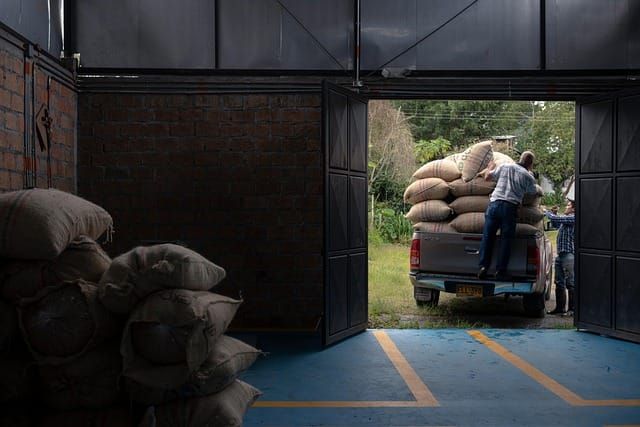The sun was about to rise from the hills of Idukki throwing a golden light on the bright cardamom farm. India feels proud to have cultivated the Queen of Spices for decades. Cardamom was so valuable that once traders used it as currency during the ancient period. When we listen to the farmer’s stories on how their crops look weaker and their dry leaves during the summer. Cultivators abandon the farms due to the unstable prices and debts on their backs expecting a better life somewhere else.
If we the people didn’t react to the crisis arising in cardamom cultivation, it could lead to severe loss including our culture, cuisines and economic growth. Our habits may start changing due to this.

The Backbone of the Cardamom Crisis
The decline in the production of cardamom is not all of a sudden, rather it is the combination of weather conditions, improper pest management and poor marketing management that has slowly erased sustainability.
1. Climatic condition (slow poison)
- Farmers are usually dependent on the monsoon conditions which are regular and predictable to nourish their crops. However, uncertain weather becomes hard to predict and is normally less beneficial for cultivation. The temperature has risen which is hard to manage which makes the cool hill station warmer creating perfect conditions for pests and diseases to evolve.
- Infections like blight, fungal and root rot once occurred rarely, but now farmers have to spend more on pesticides and fungicides every day. And the results are so disappointing as well.
2. Price Fluctuations (Less Pay)
- All the farmers work hard and manage to produce a good harvest, but they are tolerating the fluctuations in the market prices. As we all know, cardamom is an expensive spice and there is a lot of demand based on international markets. Just a single price crash of cardamom can wipe out the savings of the farmer and stuck into debt.
- Here is where middlemen take advantage of these kinds of unpredictability by buying the spice at low prices and selling it at higher rates, which leaves the real hard workers behind with little to have for them.
3. Heavy Cultivation Cost (Less Labours)
- Cardamom farming is dependent on labour. Each pod is hand-harvested by labourers and requires continuous care. However, there is a labour shortage, and an increase in wages has caused the production cost to peak.
- A lot of workers, who work in plantations have moved to cities to get a more stable job, which puts the farmers in uncertainty for their crops of not having enough hands to work in their farms.

How to Save Cardamom Farming?
Farmers are facing many crises, but there is still hope that if everyone combines their efforts from farmers, scientists, policymakers and consumers, there will be a solution.
1. Sustainable Farming Practices
- Organic farming
- Reducing the use of chemical fertilizers and harmful pesticides during cultivation by farmers as much as possible.
- Instead, farmers can use organic fertilizers like compost, cow dung and vermicompost to improve soil fertility.
- Applying organic pest control methods such as garlic extract and neem oil can be termed useful.
- Conservation of water and soil
- Practising farming with dry leaves to maintain moisture.
- Implementing techniques like drip irrigation to reduce to usage of more water.
- Conducting soil testing regularly to understand and improve the quality of soil health which can help in fast production.
- Shade Management along with Agroforestry
- Growing shade trees like silver oak to maintain humidity can be held as best practice.
- Developing crops like pepper or coffee along with the cardamom to help biodiversity.
2. Pest and Disease Management
- Natural pest control Techniques
- Using biological pest controls like ladybugs to eat harmful insects etc.,
- Neem oil spraying, chilli extract and turmeric solution to control pests can be the best natural solution.
- Encouraging birds and insects to prey on insects to avoid the use of chemicals.
- Crop Rotation and Companion Planting
- Rotation of crops to be implemented to break the pest cycles and improve the fertility of the soil.
- Growing plants like marigold and garlic along with cardamom to repel pests.
- Disease resistant Varieties
- The use of high-yielding and disease-resistant cardamom varieties can be termed as very effective.
- Collaborating with the research institutes to access the improved types of seeds.

3. Cost Reduction and Increasing the profits
- Forming cooperatives for farmers
- Farmers can form separate groups where decisions can be made on buying fertilizers and necessary types of equipment at a lower budget.
- These cooperatives help to negotiate better market prices for cardamom.
- They also provide access to government subsidies and training programs to farmers which helps to understand cardamom marketing.
- Direct Marketing and value addition
- Selling cardamom directly to consumers or food companies helps to increase value and profits.
- Creating market value-added products such as cardamom powder, oil and tea.
- Using e-commerce platforms to reach customers easily.
4. Adaptation of climatic strategies
- Weather resistant Farming
- Installation of rainwater harvesting systems to ensure water availability during dry seasons.
- Using poly house farming to control temperature and humidity levels to escape from climatic changes.
- Developing climate-resistant crop varieties
- Governments and research institutions must invest in the breeding of drought-tolerant and disease-tolerant cardamom varieties.
5. Strengthening government policies and Farmer support
- Ensuring Minimum Support Price
- Government Intervention can help in fixing a minimum price that can help farmers protect themselves from sudden market crashes.
- Increasing subsidies and Financial Aids
- Providing subsidies for farmers for irrigation and pest management tools can help farmers transition to sustainable methods.
- Ensuring easy access to loans at low interest rates can help farmers to build better infrastructure.
- Research Programs
- Setting up of agriculture training centres for farmer’s education on modern techniques.
- Encouraging public and private partnerships to make investments in research for better results in cultivation.
6. Leveraging Technology for Smart Farming
- Digital Farming tools
- Mobile apps such as kisanMits provide real-time weather updates and market trends.
- Internet of Things (IoT) based sensors can guide to monitoring of soil health and automate irrigation.
- Drone and AI Integration
- Drones help to spray organic pesticides over the crops in less time.
- AI can help to predict climate patterns and give warnings beforehand.

Final Takeaway
Yielding is not only the reason for saving cardamom farming, it’s about safeguarding the survival of farmers by protecting the biodiversity and maintaining a rich tradition of agriculture. There is a reality in the crisis of cardamom but the solutions are also applicable.
With the above sustainable practices, pest controls, cost reduction strategies, climate adaption techniques, government support and modern technology cardamom crisis can be solved. Cardamom farming can once again thrive to become a leading producing industry.
As Consumers, we have to play a major role in protecting cardamom farming by choosing organic cardamom and ethical cultivating methods. With the collective thought of securing the “Queen of Spices” and the livelihood of the cultivators.
Related Articles:





0 Comments